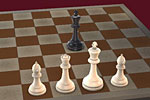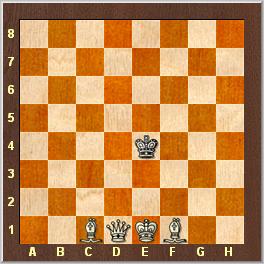



Pál Benkö is a Hungarian chess grandmaster, openings theoretician, author and problemist. He became Hungarian champion when he was 20 and finished in first place (or tied for first place) in eight US Championships, a record: 1961, 1964 (in that year he also won the Canadian Open Chess Championship), 1965, 1966, 1967, 1969, 1974, 1975. Benko's highest achievements were playing in the Candidates Tournament with eight of the world's top players in 1959 and 1962. He qualified for the 1970 Interzonal tournament, the leaders of which advance to the Candidates. However, he gave up his spot in the Interzonal to Bobby Fischer, who went on to win the World Championship in 1972.
In addition to his success as a player, Benko is a noted authority on the chess endgame and a composer of endgame studies and chess problems. He is also a dear friend who keeps in touch with us regularly, sending problems and puzzles for the ChessBase news page on special occasions – you will find examples here, here and here. For the Easter holidays Pal Benko has sent us the following five puzzles.
Puzzle No. 1

Mate in three moves
Puzzle No. 2

Helpmate in two – A: Diagram, B: Bc1–> Bf1
This problem is known as a twin: first you solve the position as given in the diagram, then move the white bishop from c1 to f1 and solve it again (as a helpmate in two moves).
In a helpmate Black moves first and cooperates with White to construct a position in which Black is mated in the specified number of moves. These are challenging and very beautiful – after all chess is all about mate, and helpmates give this ultimate goal of the game its share of attention. In regular chess mates almost never actually occur. Sometimes at an open or in a blitz game a grandmaster will actually deliver mate; and many have done so in their early pre-teen tournaments. But even when they mate, it is usually a very mundane affair, with a protected queen slamming itself onto a square next to the enemy king, or one of those perennial back rank affairs. This is natural, because each side is trying to prevent the other from executing a brilliant checkmate. All this is a real shame, because the game of chess contains a vast treasure-trove of extraordinarily beautiful mating motifs. There are thousands and thousands of checkmate positions which we normal human beings playing in regular chess tournaments will never see. Solvers of helpmate puzzle on the other hand do so, and that explains the fascination of this puzzle genre.
Puzzle No. 3

Helpmate in three – two solutions
In helpmates often the author will display two different mates in the same problem. This would be regarded as a "cook" in regular mates, but is fully legitimate and considered artistic in this form of puzzle.
Puzzle No. 4

Helpmate in three
Puzzle No. 5
Which World Champion lost bets on all of the above problems – i.e. he was not able to solve them in a specific period of time (30 minutes for puzzles 1 + 2), or was not able to solve them at all. Can you do better? Careful, though, one of the problems contains a very clever subtlety and was constructed to fool the aforementioned World Champion.
In this day and age of computers and problem solving software it is not very meaningful to offer prizes for the best or quickest solutions to such problems – unless we perhaps send a memory upgrade to the winner?! So we will draw a winner by chance from all readers who submit solutions, with one condition: at least two of them should be correct. It is a prize for participation, and here's what the lucky winner will get:

It is a historical Fritz 11 program signed by Vishy Anand, Vladimir Kramnik, Viktor Korchnoi and Pal Benko's compatriot Judit Polgar. Please submit your solutions and comments until next Sunday (May 1st) using the following feedback form. The subject must be "Benko challenge" – and please do not send multiple submissions.
We urge you to try to solve the problems without computer assistance. Pleasurable as the punching of the Enter key may be, solving Benko's puzzles all by yourself will bring you far more enjoyment and will not diminish your chances of winning the prize.